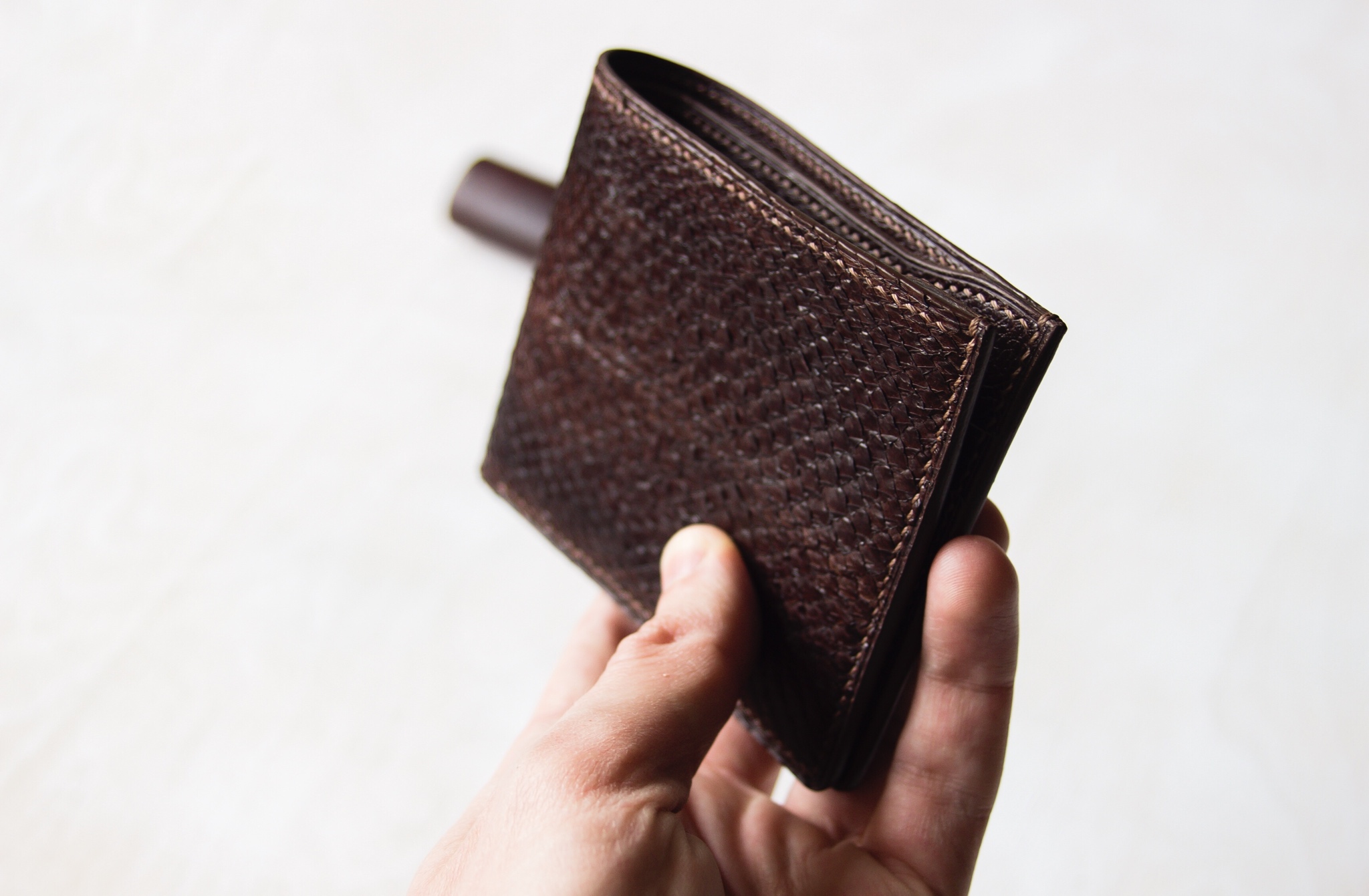Categories
[mc4wp_form id="493"]

What are the Best Exotic Leathers for Men’s Wallets?
As much as we hear about women’s handbags in the world of high fashion, you might think that handbags were the only major use for exotic leather for fashion accessories. However, women aren’t the only ones who want to have high-quality, fashionable accessories.
Many designers underestimate the market for men’s accessories such as wallets. Men like to have status symbols that show off their success and affluence, and exotic leather wallets make for a bold status symbol.
The question is: how can you make the best exotic leather wallets for men? One way is to use the right material for the job.
Let’s begin with some general factors to keep in mind when making men’s wallets out of exotic leather:
-
Size of the Skin:
When making a wallet out of exotic leather, you want to make sure the skin is wide enough to fit the panels you need. If the leather isn’t wide enough to accommodate your panels, you’ll have to sew multiple hides together, which may ruin the aesthetic appeal of the wallet.
-
The softness of Skin:
Any material you use has to be soft enough to bend in the center without cracking, and for edges to be folded so they can be stitched (except if you’re making a raw-edged, painted product).
-
Pattern Consistency:
One of the main draws of exotic hides would be the scaling patterns. These caling patterns vary even across the same skin, affecting the aesthetic.
The exotic leathers below each demonstrate these characteristics, making them ideal for making exotic leather wallets:
-
Alligator Hide
Of the crocodilian leathers commonly traded on the market, alligator skin is one of the softest, most luxurious options on the market. Alligator skins are much softer than caiman crocodile hides, so they’ll bend in the center without cracking.
With alligator hides, you can choose to use either 28/36 cm skins for smaller scales, or 45+ cm hides for larger scales. The smaller hides tend to make each wallet more expensive while using larger hides reduces the overall cost per wallet since the yields are so much higher.
Another issue with using smaller hides is that the belly scales of the alligator will be put squarely in the center of the wallet while flank scales will be on the outer edge. This may or may not be an issue for your clients, depending on their preferences. Using larger hides allows you to avoid this issue.
One thing to remember when using alligator skin for a men’s wallet design is that the tail portion of the hide is not as flexible as the rest of it. Because of this, you may need to find other uses for the tail to avoid waste, such as making it into a belt, card cases or cell phone cases.
-
Ostrich Hide
One of the great things about using ostrich hide for men’s wallets is that these skins tend to be very large. This means that you can often get many wallets from a single piece of hide. The quills make the hide easy to distinguish from other types of leather.
Though it’s worth noting that only about 2/3 of the skin is the “full-quill” bumpy portion that is so distinctive from common leathers. Because of this, you may need to find alternate uses for the remaining 1/3 of the hide, or adjust your pricing accordingly.
Aside from regular ostrich leather, there is also ostrich leg leather. The leg leather from an ostrich possesses very distinctive, scaly patterns in the center of the hide. This, like the alligator’s belly scales, can be love or hate for designers and customers alike, depending on personal preference.
One unique advantage of using ostrich leg leather is that it’s nearly the perfect size for making wallets, so there’s very little waste. This helps to make wallets made from ostrich leg leather more affordable.
-
Lizard Hide
Lizard hides are ideal for making men’s wallets for a variety of reasons.
First, tanned lizard skins have an almost perfect rectangular shape, which makes it easy to determine how many wallets you will get out of the skin and limits the waste. You should get 2-3 wallets from a single lizard skin and there should be very little waste.
There are multiple cuts of lizard skin available, and the different cuts will emphasize different scale patterns. For example, back-cut skins put the square-shaped scales of the lizard in the center and the rounded scales on the edges, while front-cut skins do the reverse.
-
Python Hide
Although the panels for a wallet don’t typically demand the immense size of a python’s hide, these hides are a popular choice of exotic material for wallets. With python hide, it’s very easy to get multiple wallets from a single skin. Additionally, python skin is exceptionally soft, making it easy to cut and sew. The rectangular shape of a python hide allows you to easily determine what your yields will be and to make cuts efficiently to fill the most panels possible with a single hide.
One thing to consider when using python hides, specifically back-cut hides with their belly scales in the center: will you place the wide scales to run across the back of the wallet, or down the spine? The choice is primarily an aesthetic one, but it’s important to make that choice before you start cutting the skin for wallet panels.
While there are many types of exotic leathers that you can use for making men’s wallets, these are the best ones for the job. These skins are easy to work with, fashionable, and flexible enough to do the job with ease.